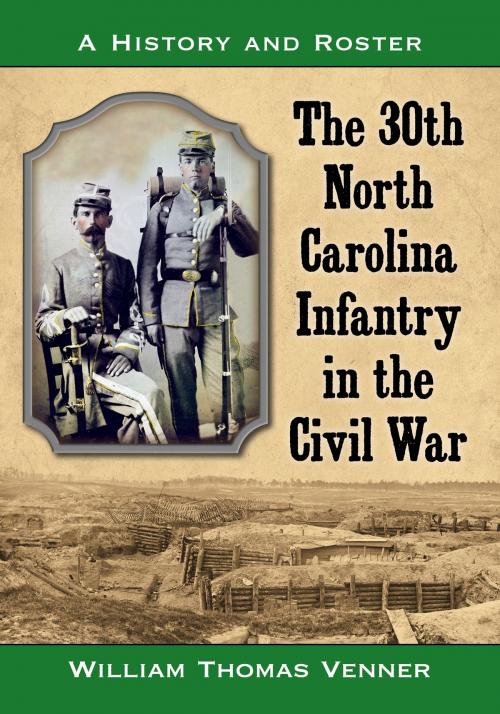The 30th North Carolina Infantry in the Civil War
A History and Roster
Nonfiction, History, Americas, United States, Civil War Period (1850-1877)| Author: | William Thomas Venner | ISBN: | 9781476627908 |
| Publisher: | McFarland & Company, Inc., Publishers | Publication: | January 12, 2018 |
| Imprint: | Language: | English |
| Author: | William Thomas Venner |
| ISBN: | 9781476627908 |
| Publisher: | McFarland & Company, Inc., Publishers |
| Publication: | January 12, 2018 |
| Imprint: | |
| Language: | English |
At the outbreak of the Civil War, the men of the 30th North Carolina rushed to join the regiment, proclaiming, “we will whip the Yankees, or give them a right to a small part of our soil—say 2 feet by 6 feet.” Once the Tar Heels experienced combat, their attitudes changed. One rifleman recorded: “We came to a Yankee field hospital … we moved piles of arms, feet, hands.” By 1865, the unit’s survivors reflected on their experiences, wondering “when and if I return home—will I be able to fit in?” Drawing on letters, journals, memoirs and personnel records, this history follows the civilian-soldiers from their mustering-in to the war’s final moments at Appomattox. The 30th North Carolina had the distinction of firing at Abraham Lincoln on July 12, 1864, as the president stood upon the ramparts of Ft. Stevens outside Washington, D.C., and firing the last regimental volley before the surrender of the Army of Northern Virginia.
At the outbreak of the Civil War, the men of the 30th North Carolina rushed to join the regiment, proclaiming, “we will whip the Yankees, or give them a right to a small part of our soil—say 2 feet by 6 feet.” Once the Tar Heels experienced combat, their attitudes changed. One rifleman recorded: “We came to a Yankee field hospital … we moved piles of arms, feet, hands.” By 1865, the unit’s survivors reflected on their experiences, wondering “when and if I return home—will I be able to fit in?” Drawing on letters, journals, memoirs and personnel records, this history follows the civilian-soldiers from their mustering-in to the war’s final moments at Appomattox. The 30th North Carolina had the distinction of firing at Abraham Lincoln on July 12, 1864, as the president stood upon the ramparts of Ft. Stevens outside Washington, D.C., and firing the last regimental volley before the surrender of the Army of Northern Virginia.















